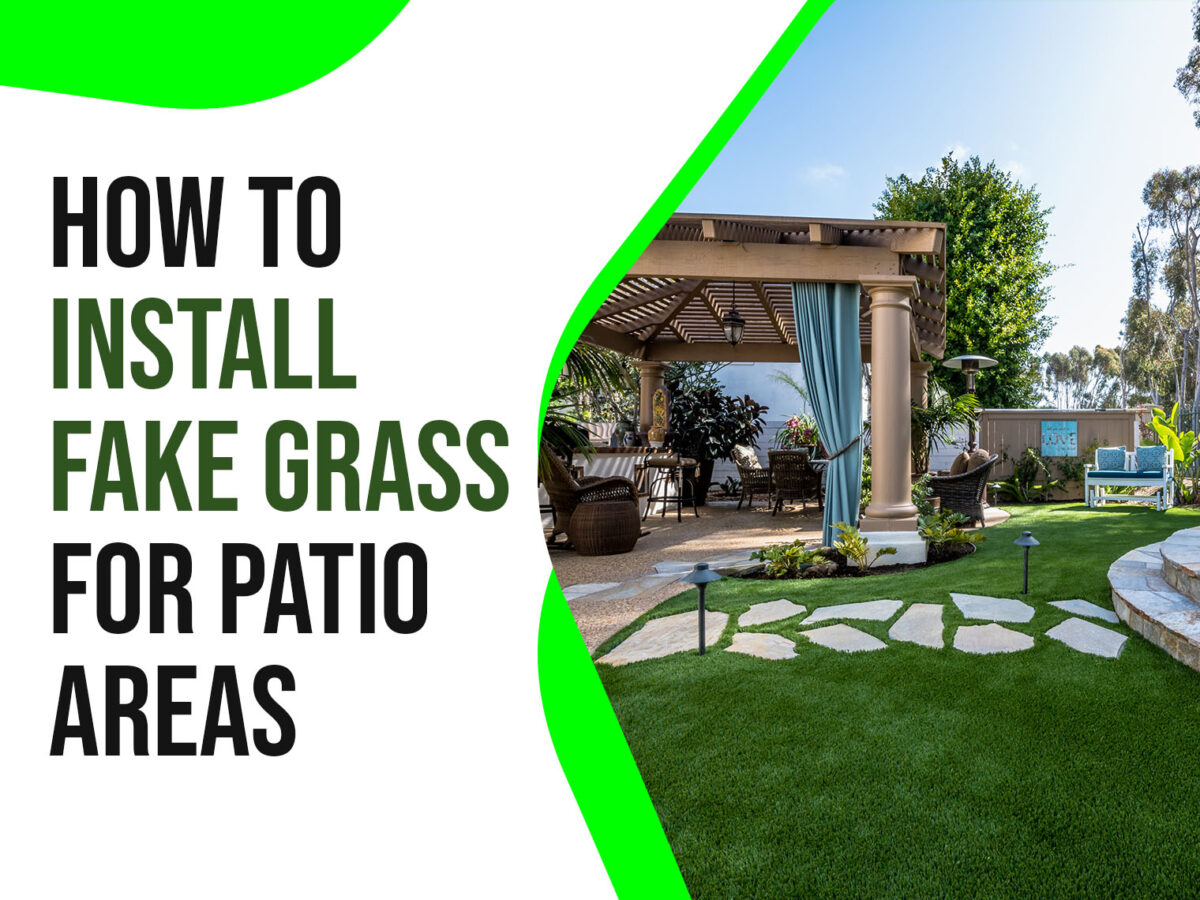- BACKYARD
- COMMERCIAL
- ENVIRONMENT
- FIELD TURF NEWS
- GOLF
- MAINTENANCE
- NEWS
- PETS
- POOL
- RESIDENTIAL
- TURF TIPS
Installing Fake Grass for Patio Areas: How It Works

Turning a drab patio into an inviting green oasis is easy with artificial grass. But simply rolling out a turf rug won’t cut it. To make fake grass for patio areas work and last for years, the installation requires multiple layers done right. Here’s why:
What Makes Installing Artificial Grass on Patios So Complex?
Patios present a unique challenge for artificial grass installation. Unlike lawns, patios start out as hard surfaces like concrete, tile, or brick. Their boundaries also tend to be more constrained, with furniture, plants, and other structures coming into play.
To address that, we adjust our installation process to include elements like:
Fixing Imperfections on Patio Surfaces
Concrete, tile and wood patios don’t automatically provide a flat, stable base for artificial grass. Any cracks, holes or uneven areas need to be fixed before synthetic turf is laid out.
This ensures the artificial grass isn’t installed over bumps or sloped sections that will eventually appear on the surface. Smooth, even patio surfaces also prevent rippling or buckling issues down the road.
Laying Out Weed Barriers for Confined Areas
Patio areas are often confined spaces surrounded by walls or fences. This makes weed invasion from below a bigger concern since there are more edges for them to sneak through, especially if the installation site isn’t properly prepared.
Using heavy-duty weed barrier fabric tailored to fit the patio’s shape seals the entire area from encroaching weeds. It also blocks sunlight and prevents roots from taking hold under the turf.
Designing a Special Drainage System for Patio Turf
Drainage is a major concern with artificial grass on patios and similar hardscaping. Without it, excess moisture can cause issues like mold and mildew, unpleasant odors, and even compromise the patio hardscape itself.
Unlike artificial grass over soil, patio surfaces cannot be compacted and spread with aggregate. Instead, we typically use drainage tiles laid out over the patio and under the turf. This creates air pockets where water can drain through without taking away from the look and feel of patio turf.
Perimeter drainage gaps also need to be left between the patio surface and any walls or posts. This ensures water doesn’t get trapped on the outer edges and undermine the turf.
Using the Right Artificial Grass for Patios
The quality of the artificial turf itself impacts how real it looks and its durability. Dense, soft-feeling grass made from polyethylene or nylon fibers lasts longer than basic polypropylene. Matching the color tones to your patio environment also creates a seamless effect and makes the turf look even more natural.
Properly cutting seams and outlines helps maintain the illusion. The direction of the grain should also be considered based on furniture placement, the angle of the sun, and other existing elements of your landscape.
Bring Your Patio to Life with Artificial Grass
Converting a patio into an artificial grass oasis takes careful planning and execution, but the end result makesresults make it well worth the investment.
Want to know if artificial grass is the right choice for your patio area? Send us a message to book a free consultation or call 866-352-4575 at your convenience. A member of the FieldTurf Landscape team will get back to you ASAP.


